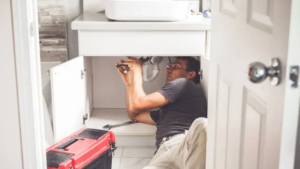Scratches, dents, and other cosmetic damage not only affect your vehicle’s appearance but can also lower its value. Filing an insurance claim can be costly and may require days or even weeks of waiting for your car to be repaired.
Expert Juanito’s Auto Body repair breathes new life into damaged vehicles, restoring them to their former glory. Learn more about the different services available to you.

Paint Restoration
A vehicle’s appearance is its most recognizable attribute, but scratches, chips, and dents can quickly diminish the look and even reduce the value of your car. A good auto body shop offers expert repair services to restore the aesthetics of your vehicle while maintaining safety and function. A good shop will use high-quality materials and follow manufacturer standards in its repairs.
Accurate Damage Assessment
Professionals know how to identify both obvious and hidden damage that may not be visible to the untrained eye, ensuring that all structural issues are addressed. This thorough assessment creates a blueprint for the rest of the repair process.
Meticulous Color Matching
Expert painting is critical to achieving flawless results, and reputable shops use advanced paint booths and technology to achieve a factory-like finish. Technicians will analyze the original paint code and use advanced software to precisely replicate it. The repaired area is then sanded and primed before the final step, which involves applying multiple coats of paint and buffing.
Insurance Claims Management
Reputable shops work closely with insurance companies, facilitating the entire claims process and ensuring that compensation received aligns with repair costs. This ensures that individuals don’t receive a bill for services not covered by their insurance, and it also minimizes delays and hassle.
In addition to addressing the physical damage, expert auto body technicians can also help you with your emotional and financial concerns following an accident. They can provide free estimates, offer a loaner car, and offer flexible payment plans to fit your needs. They can even negotiate with the insurance company on your behalf to ensure that you receive a fair settlement. In addition, they will take care of the paperwork to ensure that your claim is processed quickly and efficiently. Moreover, they will provide you with a warranty on the repair to give you peace of mind.
Dent Repair
Auto body repair is an intricate and essential process that restores the aesthetics and safety of vehicles after collisions or other damage. From sanding and painting to frame straightening and reassembling, the complexities of autobody repair demand skilled technicians committed to precision and satisfaction.
In addition to restoring your car’s appearance, expert autobody repairs also protect it from future damage and extend its lifespan. For example, if left unaddressed, scratches and dents can expose bare metal to the elements, leading to rust. With professional repairs, dents and scratches are smoothed out and painted over, preventing rust and corrosion and maintaining the integrity of your vehicle.
The first step in the autobody repair process is an assessment to determine the necessary work. Then, a detailed estimate will outline the costs and timeline for the repairs. During this phase, a reputable shop will keep you updated and communicate any changes that may occur.
Professional technicians can handle a wide range of repairs, from minor fender benders to serious collisions. They can also assist with insurance claims and paperwork to streamline the process. In the long run, expert repairs help you get back on the road faster and with less stress.
While mechanical repairs typically focus on replacing a failed part, auto body work addresses the damage that occurs when vehicles collide with each other or are exposed to environmental elements. These underlying issues can affect the structural integrity of your vehicle and compromise its safety and performance on the road.
Local shops use the newest paint-matching technology, sophisticated equipment, and certified professionals to produce flawless results. The resulting factory-style finish not only returns your vehicle to its original appearance but also ensures that the integrity of your car’s structure has been restored post-collision.
Choosing the right autobody shop can make all the difference in a seamless restoration, ensuring that your vehicle looks like new while adhering to manufacturer standards and safety specifications. When choosing a local shop, consider how quickly they can provide an estimate and whether they offer free consultations to help you decide on the best repair option.
Frame Straightening
The frames of cars and trucks are designed to absorb impact forces, but severe collisions can cause the structural skeleton to become bent or misaligned. If left unresolved, this can affect the car’s performance and safety. Auto frame straightening is a meticulous repair process that combines expert knowledge and advanced technology. It involves manipulating and reshaping the frame to its original manufacturer specifications, ensuring it is safe and strong enough for driving.
The extent of damage and the complexity of the repairs can vary significantly, requiring either extensive or minimal work to restore the frame. In cases of serious deformation, it may be necessary to replace the entire frame. Using the only gyroscopic chassis jig in existence, our team is equipped to perform a precise analysis of the frame. This enables them to identify any hidden damage and to determine the best course of action for restoration.
Uneven tire wear and difficulty steering are often signs that a vehicle’s frame has shifted. However, this can also happen due to gradual misalignment caused by aging or regular wear and tear.
Performing a thorough inspection of the vehicle’s frame is an essential step in the straightening process. Technicians use world-class frame machines to manipulate the frame, targeting specific areas to restore it to its original alignment. This ensures the vehicle is safe to drive and maintains its value and integrity for years to come.
After a collision, it is important to seek professional repairs as soon as possible. Not only will this help preserve the integrity of your vehicle, but it will also protect you and your passengers from unnecessary injuries in future collisions. Moreover, getting the frame repaired promptly will help keep your car in good condition and help you get the maximum return on investment.
Whether your vehicle has sustained minor fender benders or major accidents, our experienced technicians are ready to help. Contact us to schedule an estimate and receive the quality auto body repairs you need. With our services, you can rest assured that your vehicle will be restored to its pre-accident condition.
Panel Alignment
Just as great paint can only follow great bodywork, panel alignment is a crucial step in restoration and autobody work. A perfectly aligned car means precise gaps and seams—which also ensure that your safety is protected in a crash. Uneven gaps can prevent crumple zones from working properly, or can cause airbag timing issues that could put you at risk in a collision. For this reason, technicians often mock up the entire car after the major metal work is completed but before it’s ready for paint to make sure that everything fits as it should.
While severe gaps might require a hydraulic frame straightening jig, most bolt-on panel misalignments are easily fixed with a bit of hand tools and the right eye. These adjustments aren’t just about appearance—abnormal gaps increase wind resistance and tank your gas mileage, and incorrectly sealed gaps can let in dust and road grime that will make your car noisy and less aerodynamic. The most common culprit is fender gaps that have been enlarged by a tech attempting to get a fender to fit over an oversized fender slot.








